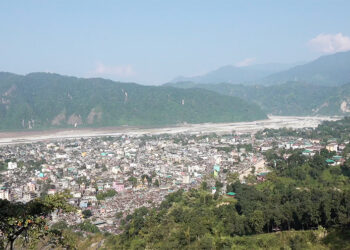 Once dominated by the cultivation of wheat and potatoes, Haa is gradually seeing new crops take root. For some farmers, chilli plantations, once unthinkable in the cold valley, are now becoming a source of income. They are moving beyond trial plots to larger production, changing the way agriculture looks.
Once dominated by the cultivation of wheat and potatoes, Haa is gradually seeing new crops take root. For some farmers, chilli plantations, once unthinkable in the cold valley, are now becoming a source of income. They are moving beyond trial plots to larger production, changing the way agriculture looks.
Among them is 32-year-old Pema Thungzom from Kana village in Uesu Gewog.
She first tried planting chillies in 2019.
At the time, the harvest was small and mostly for self-consumption.
Later, when the gewog agriculture office carried out a crop cut, officials found that Haa’s soil had the potential to produce chillies.
Encouraged by the finding, Pema and her family began to expand, with technical help from the agriculture extension office.
“When they did the crop cut, they found that we can grow chillies. That encouraged me to take up chilli plantation more seriously. After that, we got technical support like mulching, which makes work very easy for us now.”
Today, her home is surrounded by chilli plants, while greenhouses stand nearby filled with rows of tomatoes.
The harvests are sold in Paro and Gelephu.
“Talking about production, we sell around 2,500 kilogrammes of tomatoes from our four greenhouses. I am also able to sell around 65 sacks of green chillies and around 30 kilogrammes of dried ones.”
She is among the few farmers who have started commercial farming of chilli since last year.
The district agriculture office said that an increasing number of farmers are now growing chillies for self-consumption, in addition to the few cultivating them commercially.
According to the Integrated Agriculture and Livestock Census of Bhutan 2025, Haa produced more than 40 metric tonnes of chilli last year. A little over 600 farmers grow chilli in the district.
With families like Pema’s diversifying into chillies and tomatoes, Haa’s agricultural landscape is beginning to widen.
The spread of chillies and tomatoes signals more than just a change in crops, it hints at a shift in Haa’s farming story.
Karma Samten Wangda, Haa
Edited by Tshering Zam







